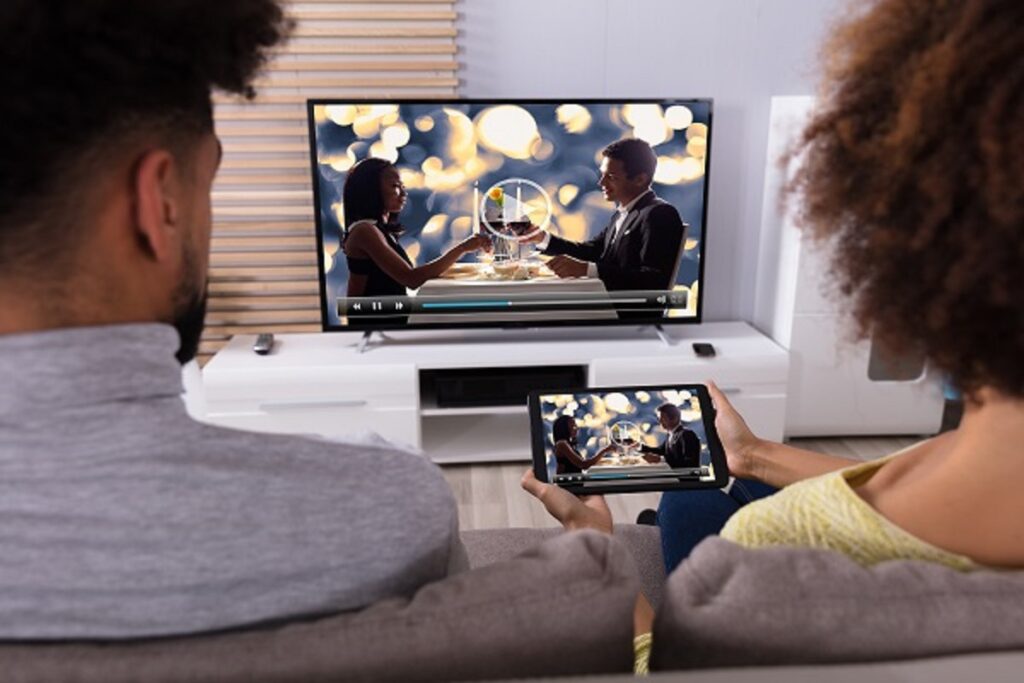Table of Contents
- The Data
- Technology Trends: What We’re Seeing in WiFi
- Technology Trends: What We’re Seeing in Entertainment
- Are people still using local and cable channels?
- Does entertainment use vary over the course of the year?
- Are there particular types of channels that are popular?
- What streaming apps are currently popular, and is that changing?
- What technology trends should you pay attention to when choosing an in-room entertainment solution?
In Part 1 of our series in December, we highlighted insights and advice from our leadership team on technology. Now, we’ll look at some data-based technology trends and recommendations for a better experience with WiFi and entertainment in 2024.
The Data
To gain insight into customer behavior, we looked at data from our customer portals for WiFi and infotainment. This isn’t a complete picture of all our customers; for example, some brands have hardware requirements using different WiFi portals. But with over 1500 properties in the WiFi Control Panel and a daily average of nearly 900 sites in the HUB Portal, our data provides a big-picture view of what’s needed as we enter 2024.

Technology Trends: What We’re Seeing in WiFi
As we noted previously, to meet guest expectations, fast, reliable WiFi continues to be a necessity. We currently recommend upgrading to 6 GHz WiFi for good performance.
But what does our data show about technology trends for WiFi use?
How much bandwidth do you need?
First, it’s important to offer at least 5 Mbps bandwidth per guest. That’s also what many hotel brand standards require. Bandwidth use has been increasing, as has the average number of logins and the average amount of bandwidth used per property. Remember that 5 Mbps is a minimum; your property may need more bandwidth depending on your customers’ usage patterns, your occupancy rates, etc.
If your customers are using high-bandwidth applications such as streaming, their usage may be even higher. For such uses, our data suggests that, on average, 10 Mbps per guest would be more prudent.
The amount of bandwidth you’ll need overall for your property will depend on how your customers use your network. Busy properties with many users may require more careful bandwidth management for a better experience.
Does every property need the same bandwidth?
There can be a wide variation in bandwidth use from one property to another. Some properties may have only a few dozen users per month, with users not consuming much bandwidth on average. At the other extreme, one of our properties had between 20-23,000 logins monthly during peak summer months!
Another lesson from our data is that usage can vary quite a bit from month to month. Even mid-sized properties can see monthly logins jump by several hundred from slow season to peak season.
The bottom line is that it’s essential to understand the patterns of use at your property to ensure you’re serving your customers well.
Do you need more than just bandwidth?
Absolutely! Adding more bandwidth by itself may not be enough. If you haven’t upgraded your WiFi equipment in a while, your customers may be unable to take advantage of all that bandwidth. Older equipment also won’t play nicely with newer consumer devices, yielding a frustrating experience.
If you’ve got enough bandwidth and you’ve upgraded your equipment (and possibly your network design) in the last couple of years, you’ll want to focus on management. By implementing managed WiFi, you’ll provide a better experience by ensuring that one user can’t hog all the bandwidth.
Your provider should be able to tell you how much bandwidth your property is using. They can also tell you how this varies throughout the year, when your usage exceeds your ISP bandwidth, and more. An experienced provider such as WorldVue can help improve performance using tools such as channel planning, access point placement, bursting, and bandwidth allocation.
What’s the most striking takeaway on technology trends from this data?
An increasingly large majority of logins now come from mobile logins. In our data, fully 87% of logins came from mobile devices! Android devices comprised 29%, with double that number of Android devices. This certainly points to the importance of mobility for users.
As WorldVue President and COO Robert Grosz noted in Part 1 of this series, customers expect to be able to do anything and everything desired with their mobile devices. To accommodate this, properties need to be aware and intentional when designing connectivity solutions for their space.
The BYOD (Bring Your Own Device) approach offers guidelines for accommodating customers’ devices, especially mobile devices. For more information on this approach and how it provides a better experience, check out our article on BYOD.

Technology Trends: What We’re Seeing in Entertainment
Customers are seeking new ways to access content. Casting and streaming are increasingly in demand at both hotels and residential properties. And while our data doesn’t include what customers are casting from their own devices, we see some patterns in their use of in-room entertainment.
Are people still using local and cable channels?
Yes! In fact, just over ¾ of our HUB Customer Portal instances are from channel use versus streaming apps. Channel use jumped to over 80% during the last couple of years but dropped again slightly to around 77%.
The data also shows that channel viewers tend to switch more often – customers view an average of 4-5 channels per room, compared to just one streaming app per room. It seems that customers who use streaming tend to stick to a single app but prefer to channel-surf when viewing live content.
Does entertainment use vary over the course of the year?
Streaming apps seem to be more popular on average during the middle of the year. It’s possible that vacationers may use streaming apps more often to explain this variation, though we don’t have the data to support this hypothesis.
Are there particular types of channels that are popular?
The most popular channels have shifted from year to year, but generally, the most watched are sports and news channels. ESPN and Fox News have traded the top slot over the past few years. CNN and TNT are also popular. The children’s channel Nickelodeon has appeared in our top-viewed channels for several years. All the top-viewed channels are now HD channels.
What streaming apps are currently popular, and is that changing?
Netflix and YouTube, respectively, have occupied the top 2 slots for our customers for several years. Bluetooth (#5) and Chromecast (#10) are also popular methods for watching content. TED Talks have been decreasing in popularity, as has Hulu.
What technology trends should you pay attention to when choosing an in-room entertainment solution?
The biggest thing we see in our data is that customers like to have choices. They’re watching a lot of different content from many different places, so it’s important to offer options. This includes both a broad selection of HD channels and the ability to stream or cast content.
And, of course, that brings us back around to WiFi. Without the right WiFi network, your customers will have a frustrating experience with your content. A great in-room entertainment solution isn’t enough without great connectivity to support it!
WorldVue is your trusted advisor for new developments and property improvement plans, your single source for a wide range of technology products, and your ONE point of contact for installation, service, and support nationwide. Call us to find out how our solutions to meet technology trends for connectivity, infotainment, and more can create a great experience that keeps your customers coming back!

